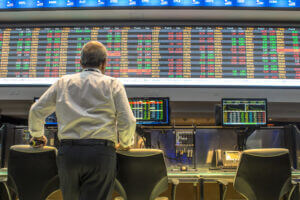On Monday, the U.S. dollar lost strength as risk sentiment improved. It was made better by optimism that retail investors who targeted hedge funds last week had directed their visions elsewhere.
The American currency fell against most of its peers as Asian stocks rallied after four straight days of losses.
Furthermore, the risk-sensitive Australian dollar increased, and the sterling also witnessed gains.
The dollar found support as traders remained cautious that retail investors who had organised online might continue their assault on hedge fund short positions, sparking more volatility. Still, the crowd’s focus seemed to have shifted to silver.
Furthermore, it is essential to mention that uncertainty over the size of President Joe Biden’s fiscal stimulus package and obstacles to vaccine rollouts also gave reasons for caution.
Significantly, a group of Republican senators urge Biden, a Democrat, to downsize his proposed $1.9 trillion pandemic relief package.
Additionally, the U.S. dollar index declined by 0.1% and settled at 90.534 on Monday in Asia. Significantly, last week the greenback dropped as much as 0.5%.
Notably, the gauge saw a recovery from a nearly three-year low of 89.205 at the beginning of 2021. Hence it was largely range-bound last week.
Investors are trying to evaluate whether a selloff is likely to resume
Investors are trying to evaluate whether a nearly 7% selloff in 2020 is likely to resume. Significantly, the last year selloff was driven by expectations of a global pandemic recovery amid massive fiscal spending and extended ultra-easy monetary policy.
According to the head of a forex strategy at National Australia Bank in Sydney, Ray Attrill, the greenback’s future in the next one day to one week to one month is in the hands of risk sentiment.
The Australian dollar increased by 0.2% and settled at 76.57 U.S. cents, reversing an earlier decline on new signs of weakness in China’s recovery, a key customer for Australian commodities.
Furthermore, data from the weekend revealed China’s factory recovery slowed in January, hobbled by a wave of COVID-19 infections.
The British pound increased by 0.4% and settled at $1.3739. It was approaching the two and a half year high of $1.3759 hit last week.
Meanwhile, the euro declined by 0.1% and touched $1.2185, as it resumed fluctuating in a narrow range.
Additionally, the U.S. dollar dropped by 0.1% and hit 104.655 yen. Significantly, it reached the two and a half year high of 104.94 yen.











